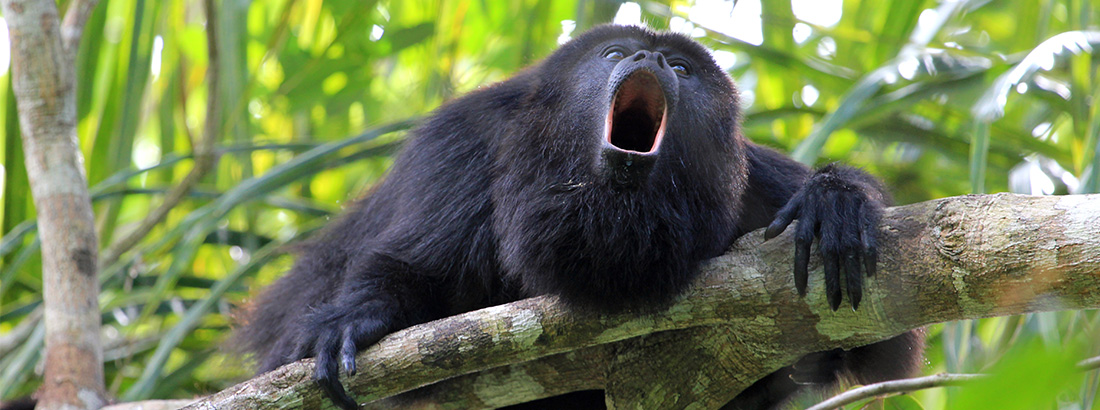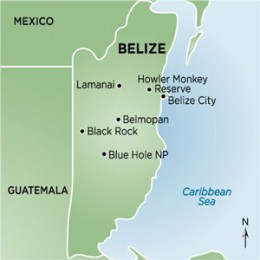It almost seems too small a country to be overflowing with such a rich Mayan history and abundance of tropical life. Nestled south of Mexico and between Guatemala to the west and the Caribbean Sea to the east, about 35% of the land in Belize is under some form of protection. This includes 3 types of forest – coastal, tropical broadleaf and pine – that cover a remarkable 60 per cent of the country. It is these forests that help support over 4000 species of flowering plant and nearly 600 bird species. The 100,000 acres of lush forest in the Maya Mountains alone provide key protection for Jaguars, Black Howler Monkeys, toucans and parrots. Off the marshy coast lay some 450 islands or cayes as well as the 300 metre-long Belize Barrier Reef – the world’s second longest barrier reef and home to roughly 500 fish species. Now ruinous remnants of the storied Mayan history of the area are found at the Lamanai and Xunantunich Maya Sites, among others, where formidable structures offer reminders of fascinating pre-colonial civilizations. Travel with us by land and water where a cornucopia of ancient cultural history and vibrant natural history collide.


